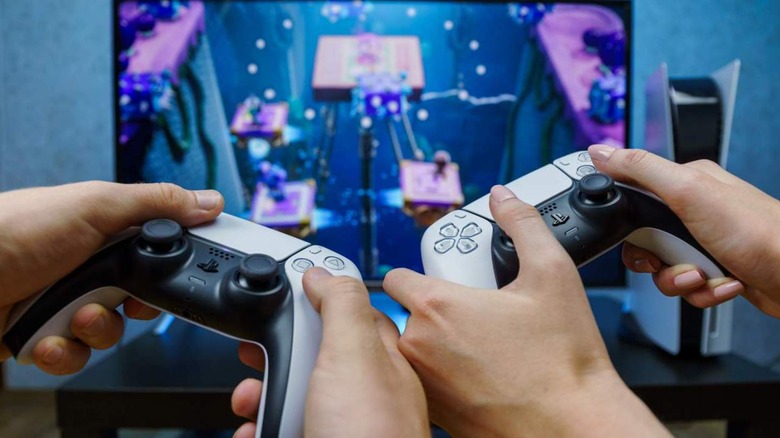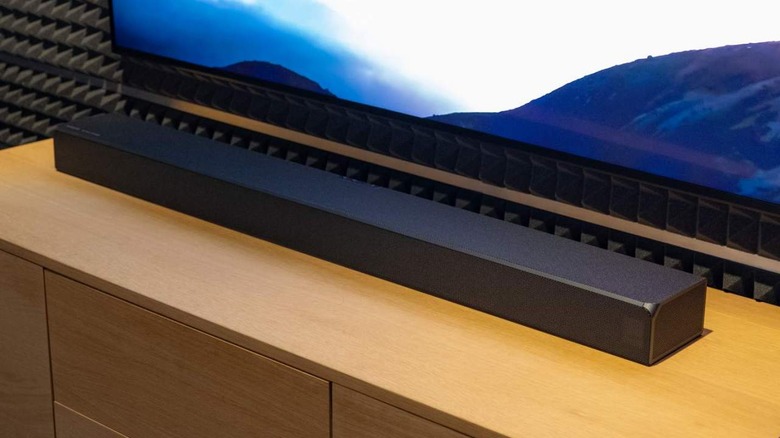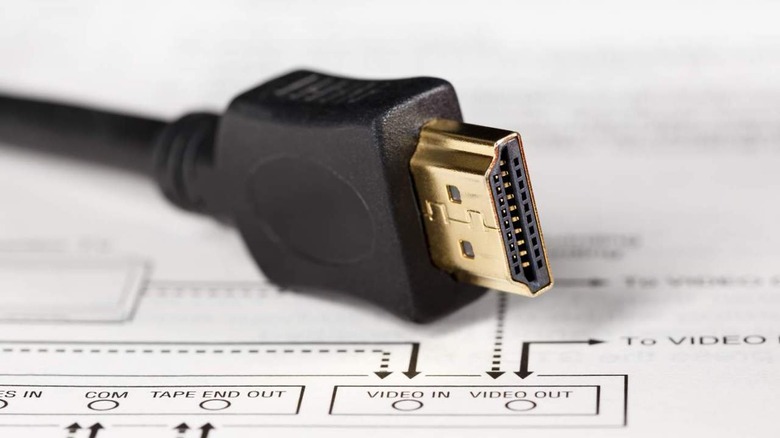What's the Difference Between HDMI 2.1 and 2.0?
HDMI inputs have been commonplace on the back of televisions and other home entertainment devices since the release of the technology in 2002. Unlike most other categories of consumer electronics, however, televisions and home entertainment devices do not see major upgrades every year or even every two years. Even more so, when upgrades do happen, the new features take several months — in many cases, years — to be embraced widely in the industry and by users. One such upgrade is the HDMI 2.1 standard which, although it has been around since 2017, has yet to completely replace its predecessor in terms of relevance or general acceptance.
That may be changing. Thankfully, HDMI 2.1 is backward compatible with HDMI 2.0 cables and devices, as SlashGear has previously noted. However, if you are inclined to completely overhaul your home console gaming or entertainment setup, it is worth weighing in the benefits that HDMI 2.1 offers over HDMI 2.0.
3. The difference between HDMI 2.1 and HDMI 2.0
The latest HDMI 2.1 standard is leaps ahead of HDMI 2.0. The first big difference that comes to mind is support for higher video resolution. HDMI 2.1 can support video transmission up to 4K video throughput at 120 frames per second (fps) or 8K at 60fps — as opposed to HDMI 2.0 which could only be used for 4K at 60fps or 8K at 30fps. By doubling the supported frame rate, HDMI 2.1 opens support for more dynamic video content, especially games.
Two popular gaming consoles — Xbox Series X and PlayStation 5 — support HDMI 2.1 with frame rates up to 120fps in games. Besides the higher frame rate, HDMI.org notes that the HDMI 2.1 standard also ensures that the faster-refreshing content is optimized for the best visual experience. This is made possible by the additional support for Variable Refresh Rate (VRR), which dynamically changes the refresh rate of the display and synchronizes it with the frame rate of the content to ensure a smooth transition from one frame to another and eliminate any visual tearing or jitter in between the frames.
2. HDMI 2.1: Faster data speeds and better audio
In theory, HDMI 2.1 is also capable of up 10K video resolution at 120fps, as CNET has pointed out. But there is barely any device at present that can be tested to verify these claims. The support for higher resolution in HDMI 2.1 and twice the maximum number of frames supported by the previous standard also demands faster data transfer through the cables.
HDMI 2.1 satisfies that requirement by upping the maximum supported bandwidth from 18 gigabits per second (Gbps) to 48Gbps. HDMI.org notes that the TLDR is that faster data transmission also means an HDMI 2.1 also supports Dynamic HDR, which allows the HDR metadata to be adjusted with each frame instead of a static HDR setting for the entire video content.
HDMI 2.1 also supports HDMI Cable Power which can allow active HDMI cables to be powered directly by the output source. Active HDMI cables are used to transmit data over longer distances to ensure the signal does not suffer a loss of amplitude. Therefore, Active HDMI cables require an additional power source when used in an HDMI 2.0 grid.
1. What you need to upgrade to HDMI 2.1
As we mentioned above, HDMI 2.1 is backward compatible with HDMI 2.0, and that means you can continue to use your older peripherals with a new TV — or vice versa. The shape and size of the HDMI 2.1 connector, as well as the port, is the same as HDMI 2.0, so you won't need to buy new cables unless you really want to benefit from the additional features that HDMI 2.1 offers.
So the question remains, do you really need HDMI 2.1? The answer strictly depends on your usage since the number of devices that make use of the new standard is fairly small. At present, the only significant impact is in terms of console gaming, specifically if you own the Sony PlayStation 5 or the Xbox Series X consoles along with a TV that has a 120Hz refresh rate panel. Of course, if you are looking to completely revamp your home entertainment and want nothing but the best, then upgrading your entire setup is a no-brainer.



